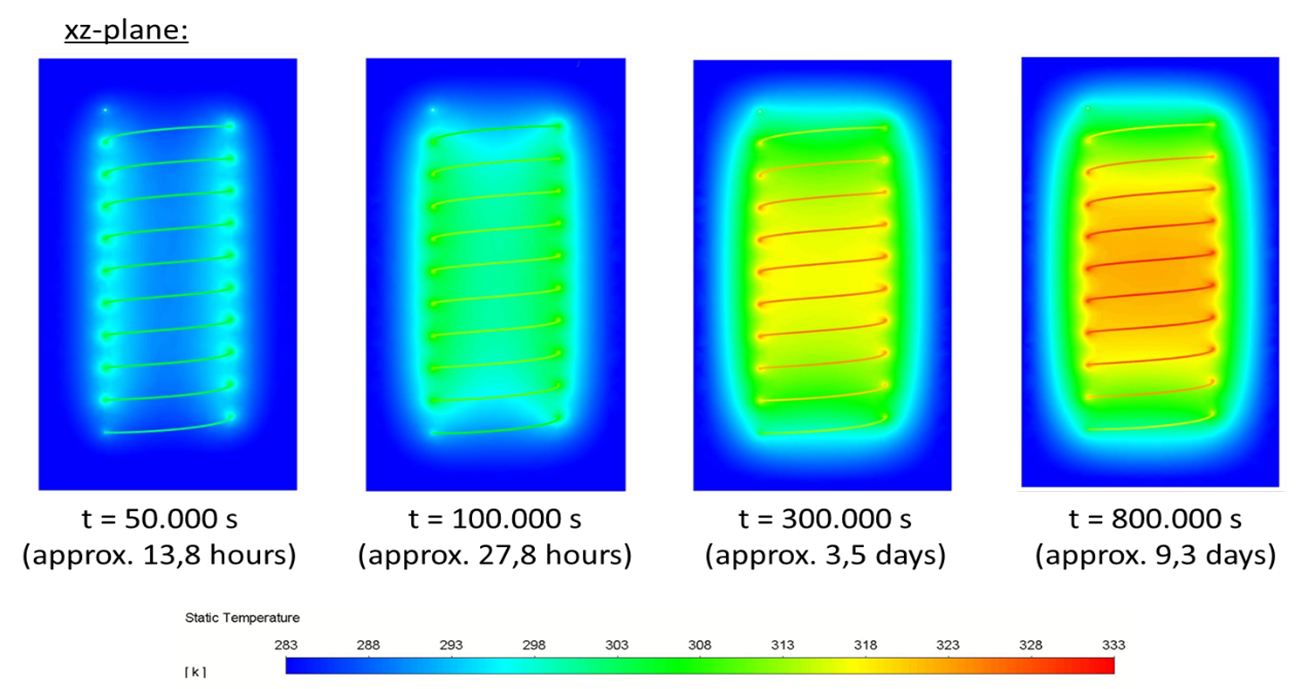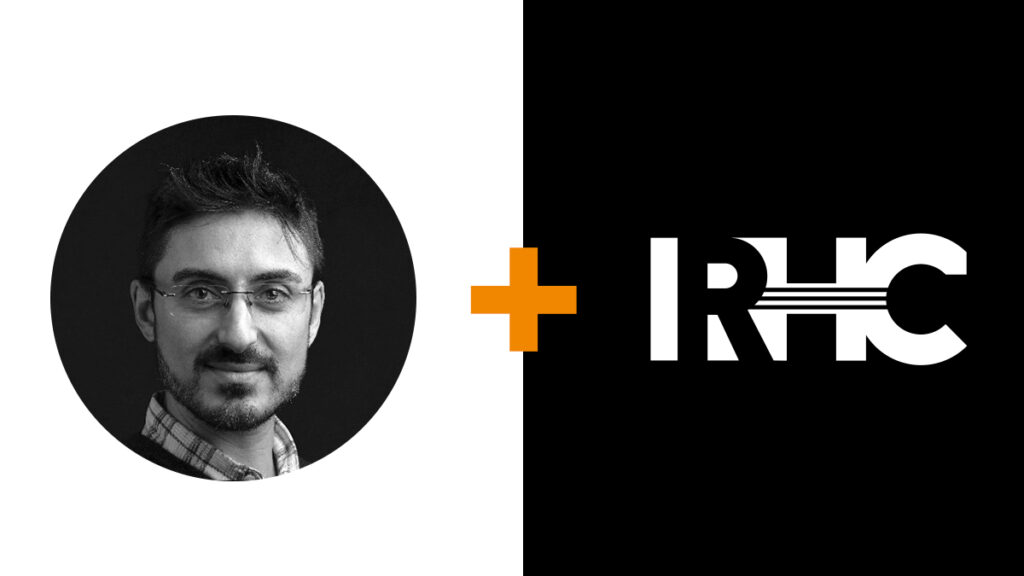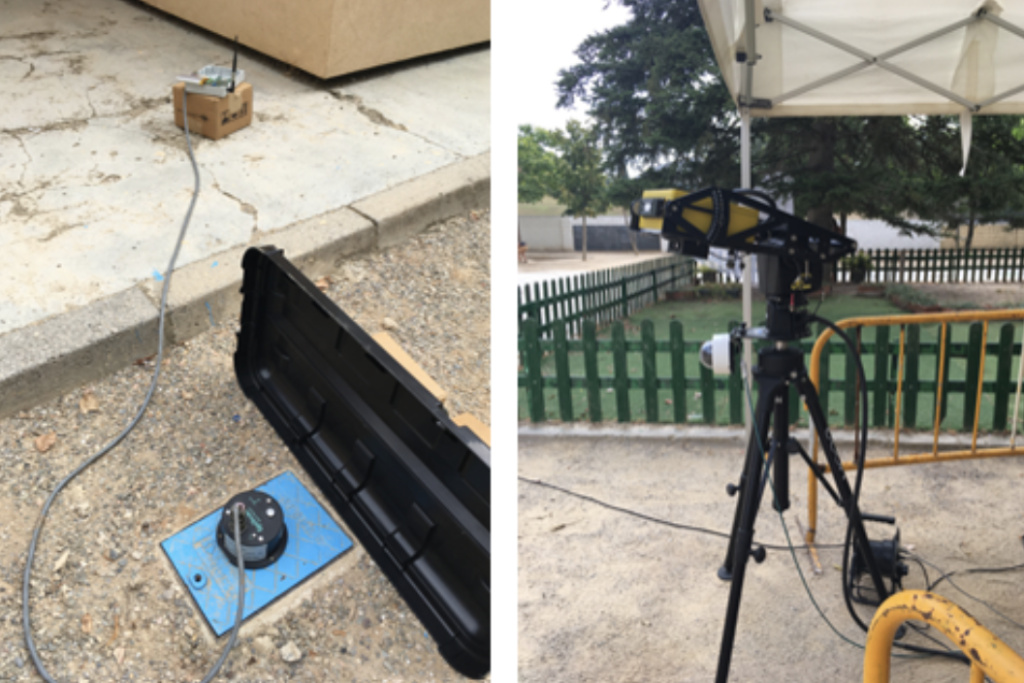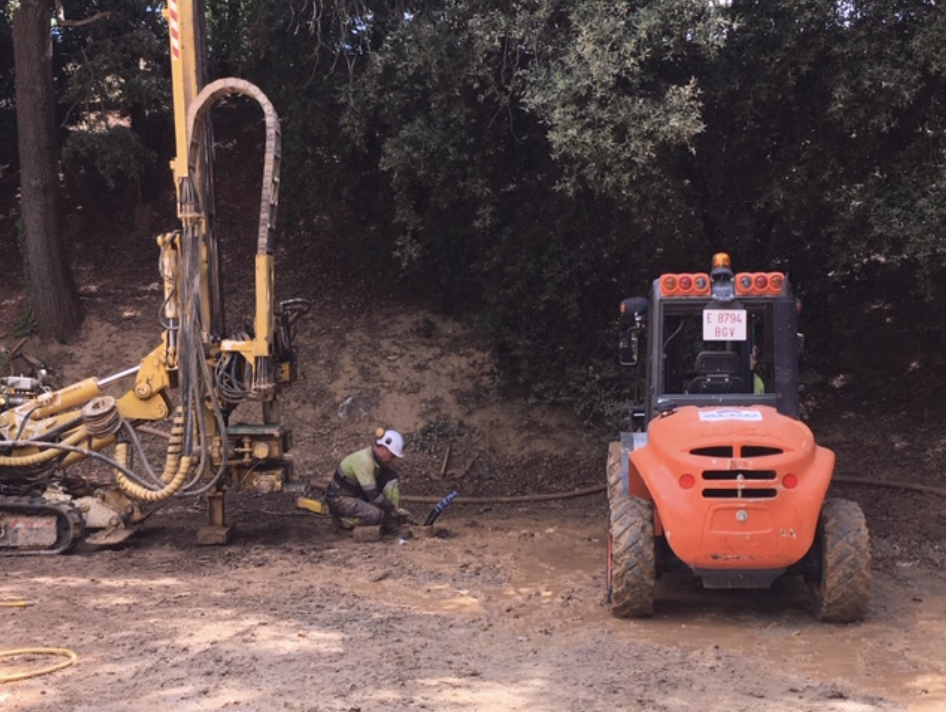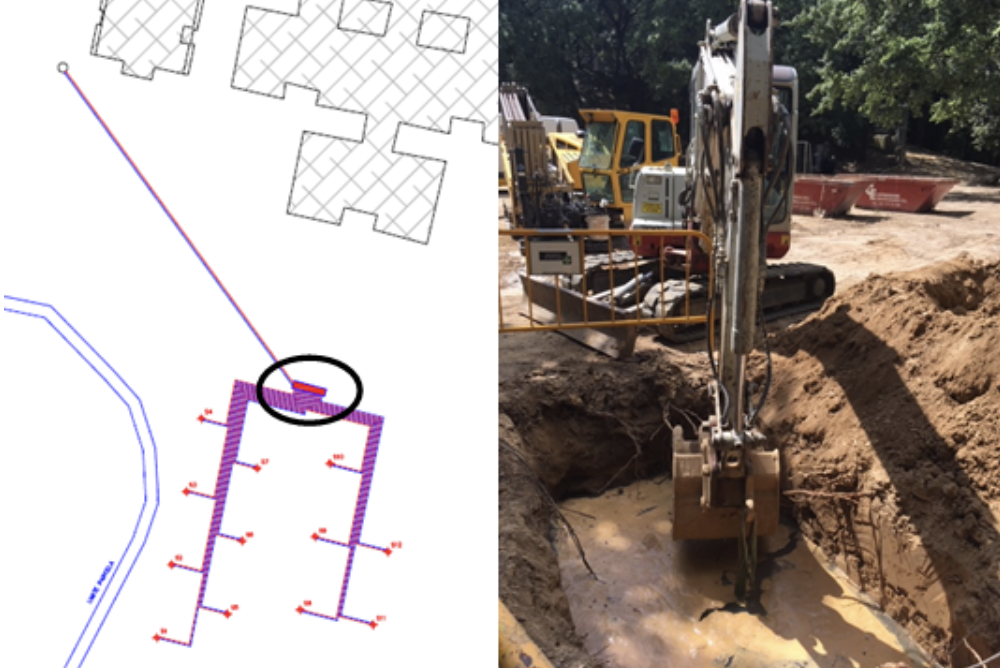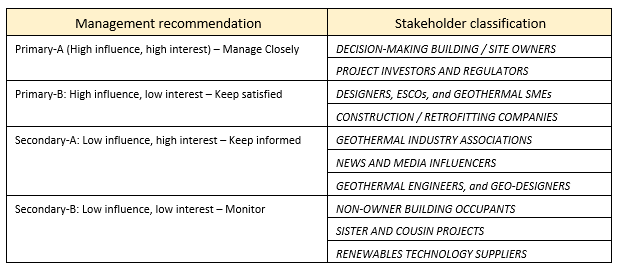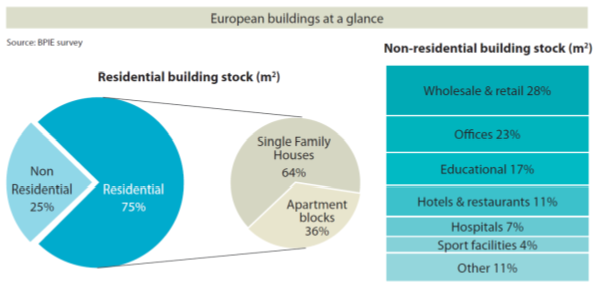by Henk Witte – Groenholland
One of the key aspects of the EU GEOFIT project is the development of integrated engineering design tools for different types of ground heat exchangers. This toolkit provides design methodologies for vertical borehole heat exchangers, shallow horizontal and slinky type heat exchangers, and earth basket (spiral) heat exchangers.
Ground heat exchangers (GHEX) are used to provide a heat source or heat sink used for heating or cooling a building. They are typically constructed of plastic pipes installed in different configurations in the ground. A fluid is circulated in the pipes and the GHEX extracts heat from the ground (heating operation) or rejects heat to the ground (cooling operation).
For the validation of the analytical solutions used in the integrated engineering design toolkit, especially the new finite line source solutions developed for earth basket (spiral) heat exchangers laboratory experiments (figure 1) and detailed numerical simulations (figure 2) have been performed.
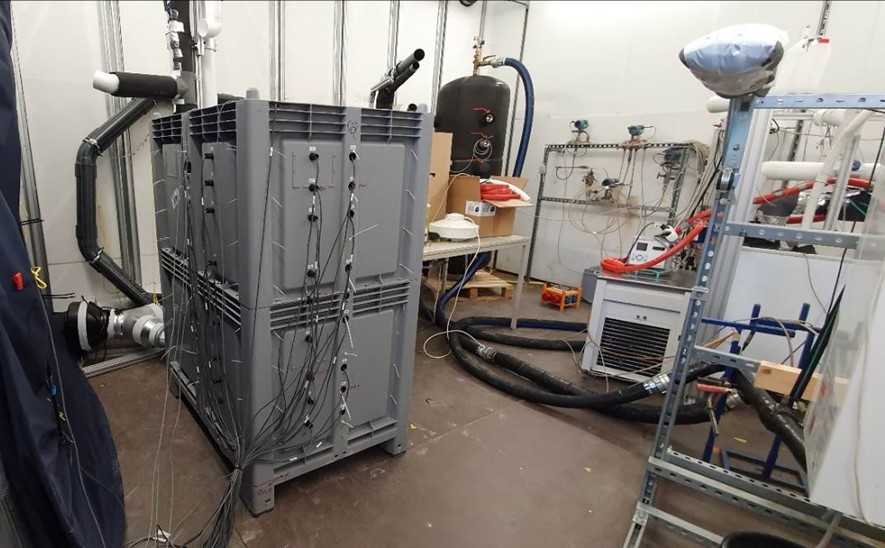
The performance of a ground heat exchanger can be summarized to two key parameters:
- Pressure drop: A measure of the pump energy needed to move the fluid through the heat exchanger.
- Thermal resistance between fluid and ground: A measure of the thermal performance of the GHEX.
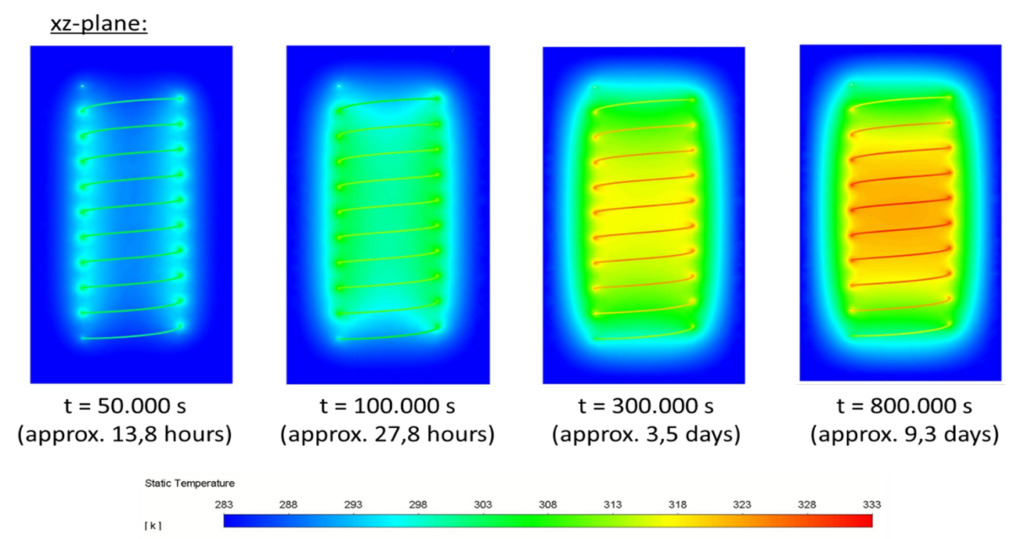
The goal of the performance analysis is to identify key-design parameters affecting the overall system performance. Parameters investigated include:
- Diameter of the earth basket (spiral) heat exchanger
- Pipe diameter in relation to flow rate and pressure drop
- Distance between adjacent rings in relation to total length and buried depth
- Soil thermal parameters
Evaluation of the results of the performance analysis should take into account the actual effect on system performance. As an example, it can be attempted to reduce the thermal resistance in all cases as much as possible. However, the effect on performance is related to the actual heat rate of the system (figure 3). It is clear that with a low heat rate (5 W/m) the thermal resistance can be allowed to be high without affecting performance. These results will have implications for operating these systems during part-load conditions, which is important in view of the application of frequency-controlled compressors in the heat pumps. In this way, the results of the GEOFIT project not only provide designers with the tools to evaluate different types of ground heat exchangers in one integrated tool but also allows optimization of actual system operational control.

REFERENCES
Meeng, C.L (2020). Development of an engineering tool for the design of novel shallow ground heat exchangers – GEOFIT. MSc Thesis TU Eindhoven.
Dörr, C.J. (2020). CFD Analysis of Ground Heat Exchangers. MSc Thesis Montan Universität Leoben, Austrian Institute of Technology.
Kling, S. (2020). Experimental characterization of Helix-Type Ground Source Heat Exchangers Configurations for Developing a Standardized Design Tool. MSc Thesis FH Burgenland University of Applied Sciences, Austrian Institute of Technology.
